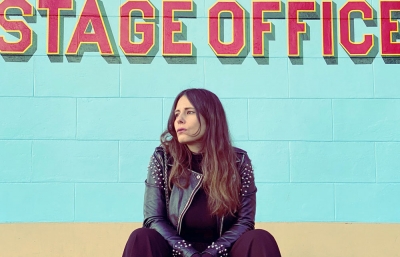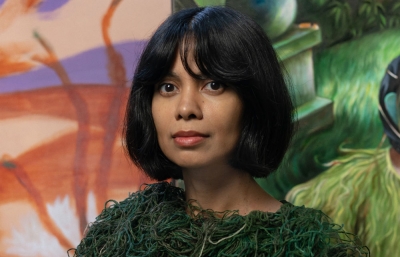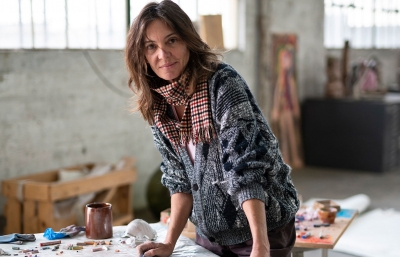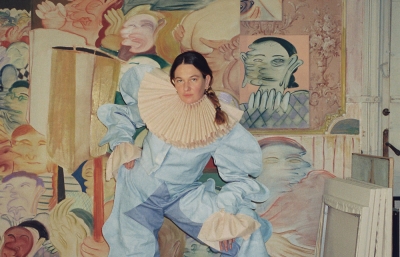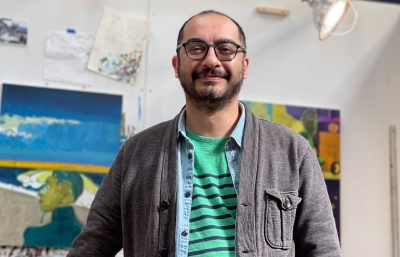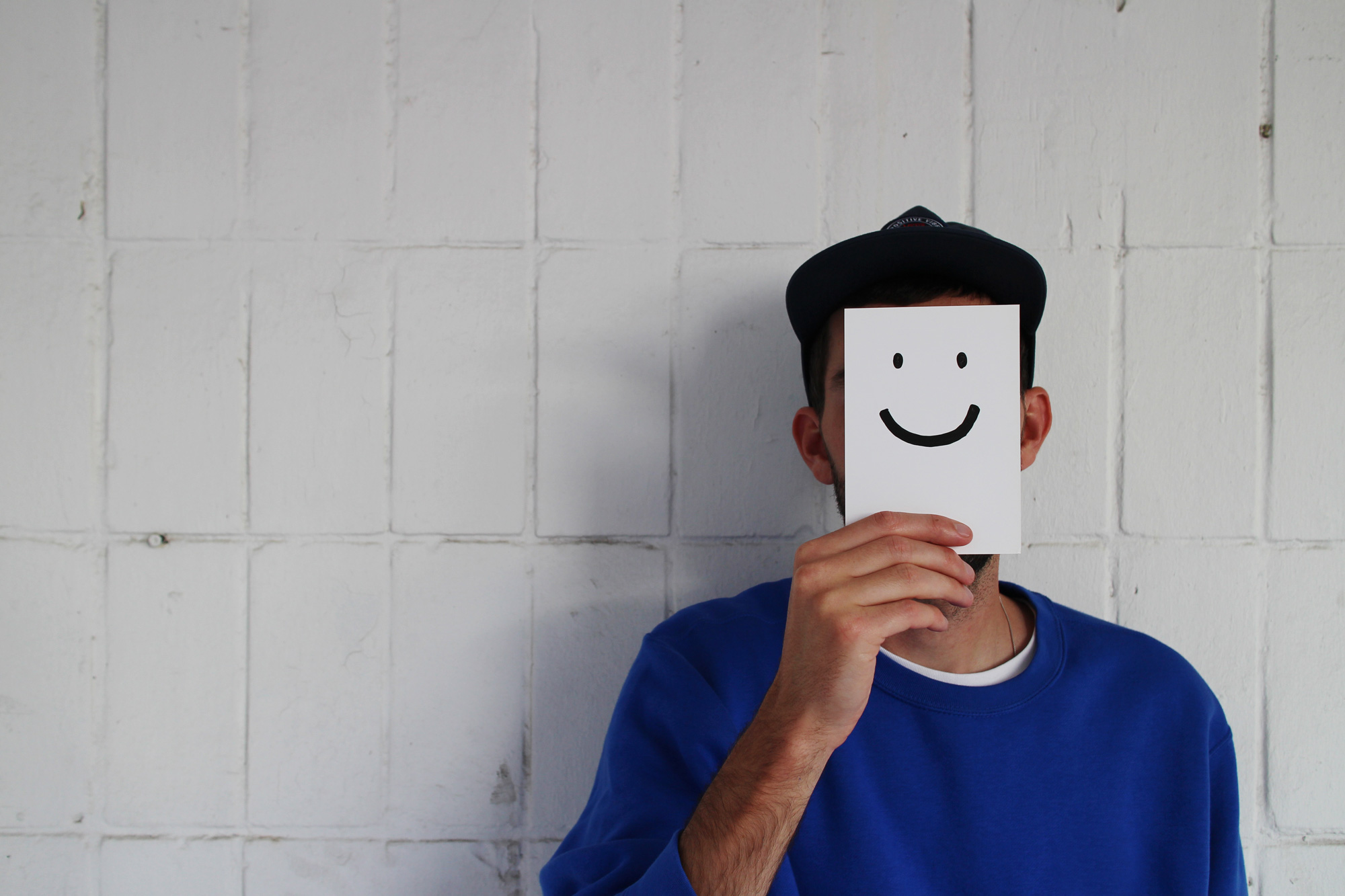
Sainer
The Road To Harmony
Interview and Portrait by Sasha Bogojev
It’s not often that a young graffiti writer from a place like Poland gets a chance to travel and paint multi-story facades in some of the biggest cities around the world. Although Sainer might say, modestly, that he was, "in the right place at the right time,” a decade filled with game-changing murals and equally outstanding canvases and drawings suggests that it was more than chaos theory.
Graffiti culture has proven to be a powerful filter and incubator for discovering and nurturing some of the biggest talents in the contemporary urban art movement. The story of Sainer and Bezt, two high school friends best known as Etam Cru, is a prime example of graffiti’s breadth. After years of leaving large scale marks on urban landscapes from Hawaii to Australia, Dubai to Bosnia, and all over Europe and U.S., this dynamic duo has shifted to developing their own individual visions as they explore new interests. We met with Sainer shortly after his inclusion in the superstar lineup of Scale Project in Munich, in the midst of finishing his personally groundbreaking new work for an upcoming solo show in Paris. Focused on composition and color schemes, and versatile in different styles and techniques, Sainer's artistic oeuvre is full of exciting turns and twists. Intent on challenging the conception of modern street art, or "muralism" as he refers to it, he continues to plumb the depths of contemporary urban art.
Sasha Bogojev: When did you start working as Sainer?
Sainer: Well, before I started working as Sainer, I was doing graffiti letters as Sain. But somehow, friends kept calling me Sainer because I guess it was easier to pronounce in Polish. By the time I started art studies and was getting away from letters and more into characters, and since everyone was calling me Sainer, I just kept that. This was around 2007-2008.
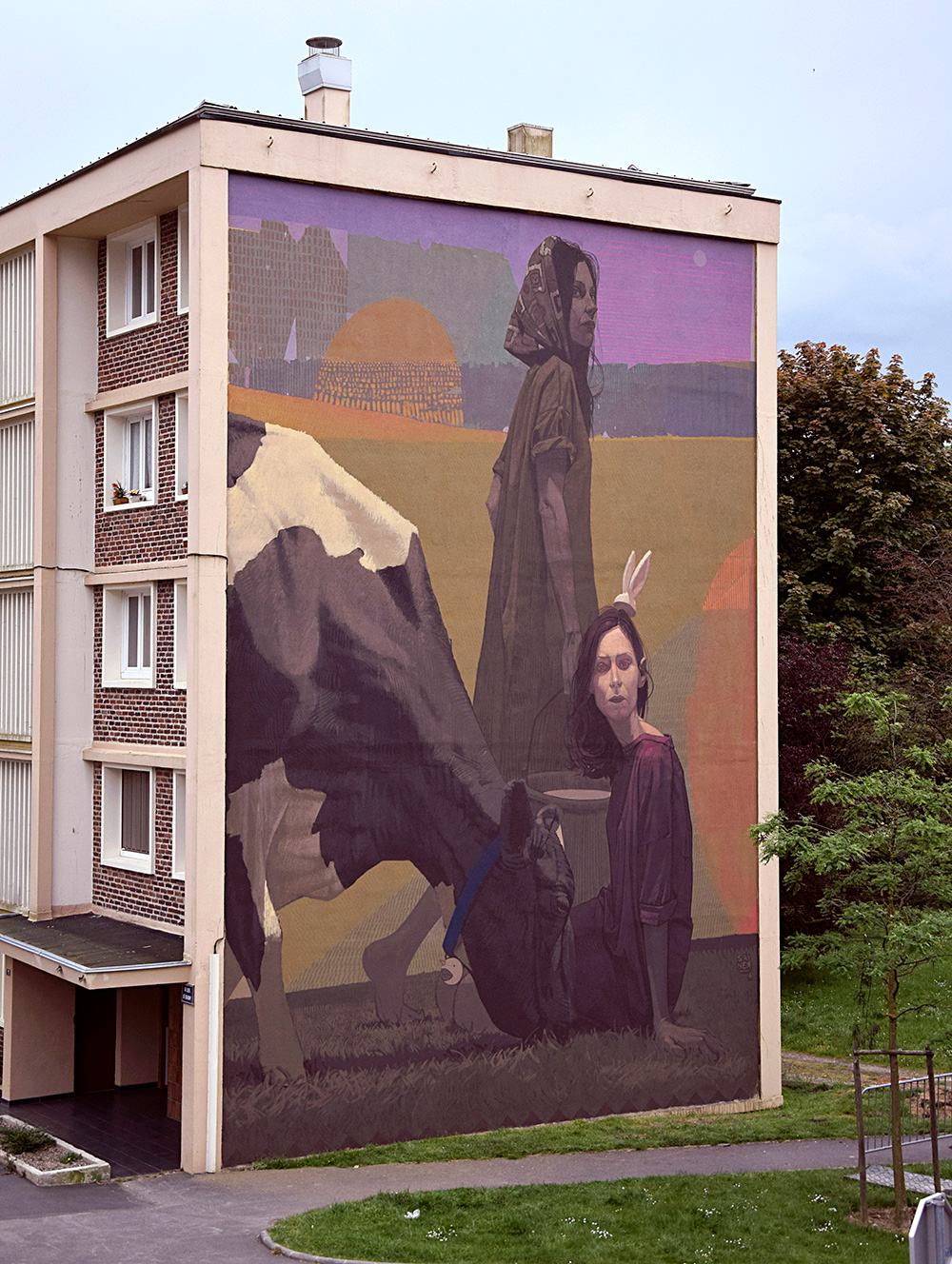
And when did you and Bezt start Etam Cru?
Originally Bezt was doing Etam before we met. When we met at school and did our first wall, which was only letters, we realized it worked well and right away wanted to give our crew a name. We couldn't think of one and since Bezt was already spraying Etam with another friend who wasn't active anymore, we just took that. It was short, easy to say and in Polish, it means something like, "Whatever," or, "Forget about it." We liked the simple meaning and how it's easy to pronounce outside Poland.
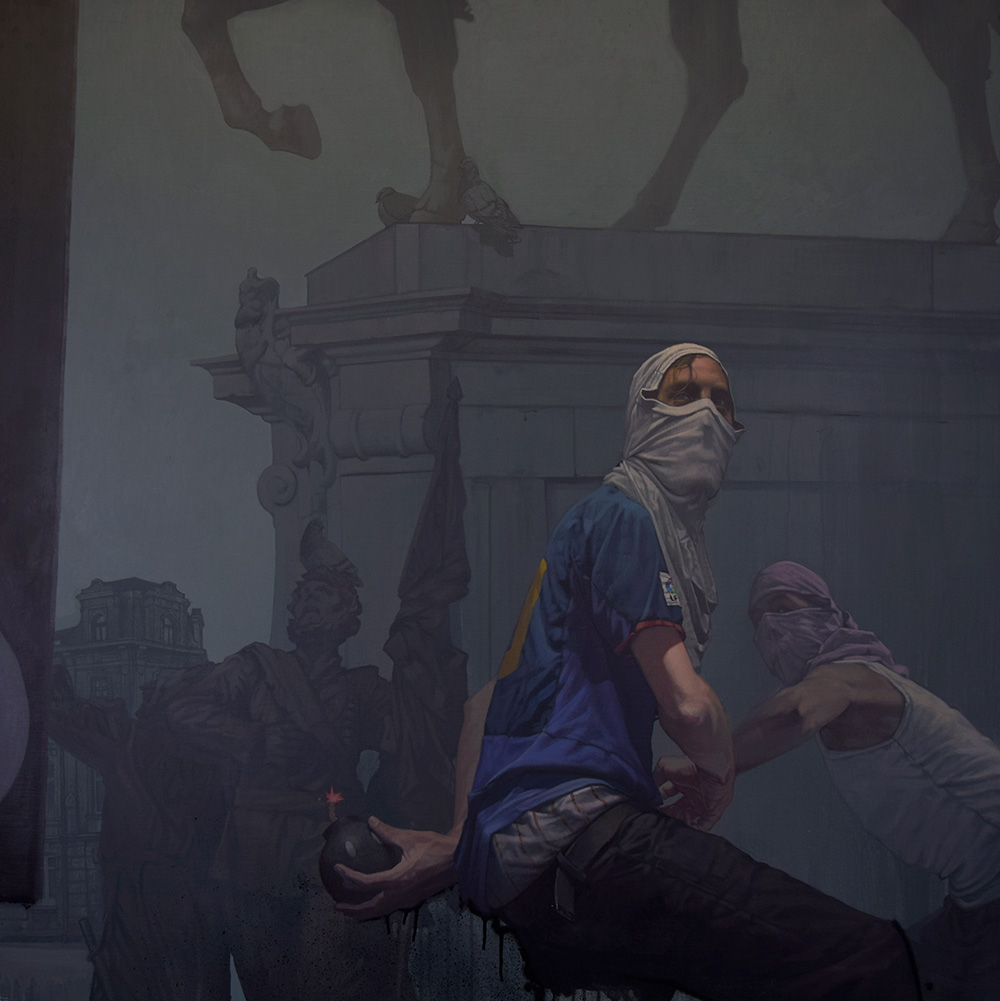
What are the pros or cons of working together versus working alone?
I really like to work with someone because you get to learn a lot when making compromises. And before painting, I was playing football for almost 10 years, so I was used to working in a team. In the classic art world, there are really not that many collaborations. I guess it's about ego and about proving that you are the best. Graffiti has this positive view towards collaborating. When you collaborate, you have to think of the other person and agree on things, so we would mostly split it up and each would do a different part. Collaborating is about compromises, so sometimes you have to give up your own ideas, and that can lead toward learning something new.
You both always seemed like distinct individuals, not just a blend of two artists.
When we started, we were painting in totally different styles. We decided that when we worked together, it would be cool if people couldn't recognize who did a certain part of the wall. It was cool until we started painting similarly as individual studio artists. Now, it would be really great to find our individual, different styles, and come back to working together, because it's much more fun to try and combine different elements.
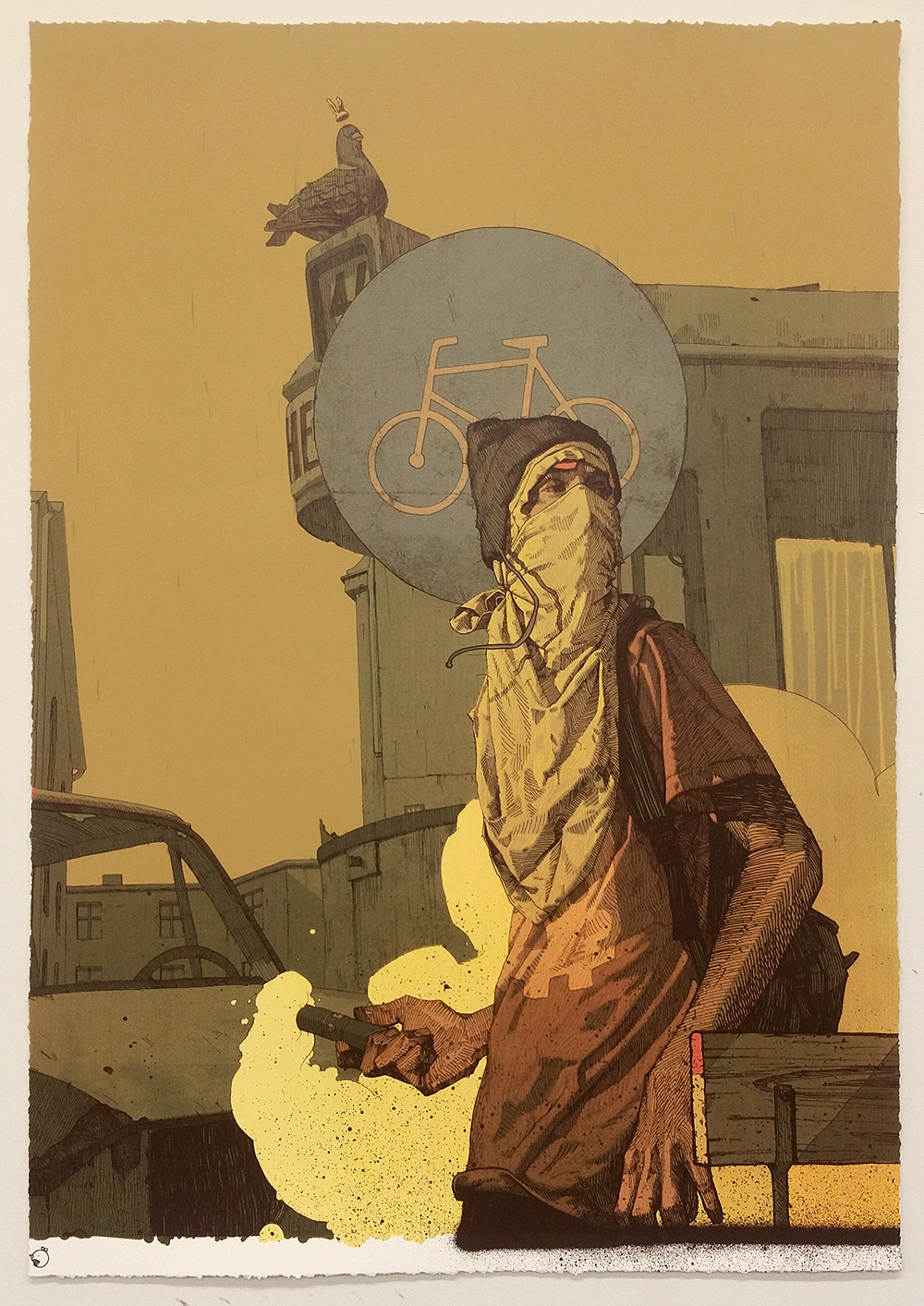
You took this collaborative idea into painting recently, right?
It happened accidentally when the artist Sebas Velasco wrote me an email saying he was coming to Gdynia, Poland for a short holiday. He asked me to paint something together, and since I just came back from a mural trip, I asked if maybe he would like to try to paint canvas together, just for fun. Since then, I've done some works with Sebas, Velvet and Zoer, and would like to continue to do those in the future. Even if the final result isn't the one you expect, the process and seeing someone else work is really important for me. Like when I visited Andrew Hem's studio and we just worked together in his studio on different paintings for a few days. It was more about bringing the graffiti jam atmosphere in the studio instead of going from one mural to the next.
I noticed you've been doing fewer murals lately. Is that by choice or did it just happen?
I decided to chill out a little bit. There was a time when I was traveling too much and I didn’t get time to develop something new. Also, these days, it's really all about the wall—I might paint a mural if the wall is nice, has a good surface, nice location with nice visibility. I prefer to get the wall I really like to paint instead of travelling around painting the same stuff to cover another space.
You made quite a transition from your early graffiti days into massive, figurative murals. Were you aware of the transition?
Not really. It was a natural process. At the beginning, we were painting smaller walls and would organize everything by ourselves. We would go to Bezt's hometown, and since he knew everyone, we could get walls pretty easily. We would also visit our friends in different cities because someone gave them nice walls to paint. Of course, there were lot of graffiti jams and some of them slowly transformed into mural festivals. At the same time, since 2008 or ’09, the number of mural festivals started growing, so I guess we were at the right place at the right time.
How did it feel to get such international exposure and get to travel around the world?
I was really enjoying it at first. For us, it was living the dream. When we started painting bigger stuff, we thought how cool it would be to meet some of the bigger guys. But I didn't expect we'd meet them, let alone paint with them. In Poland, we have this complex of feeling lesser in value, I guess, still because of communism. We were always following another culture, and, in the 1990s, American culture was the coolest thing. Even in graffiti, we always followed things from Western Europe or US, thinking we're behind it or we can't be as good. I don’t know, there is this kind of mentality that people don't believe when you are trying to think bigger or differently. You can find it everywhere, starting from primary school until the art academy. But that’s a topic for a whole other interview, I guess.
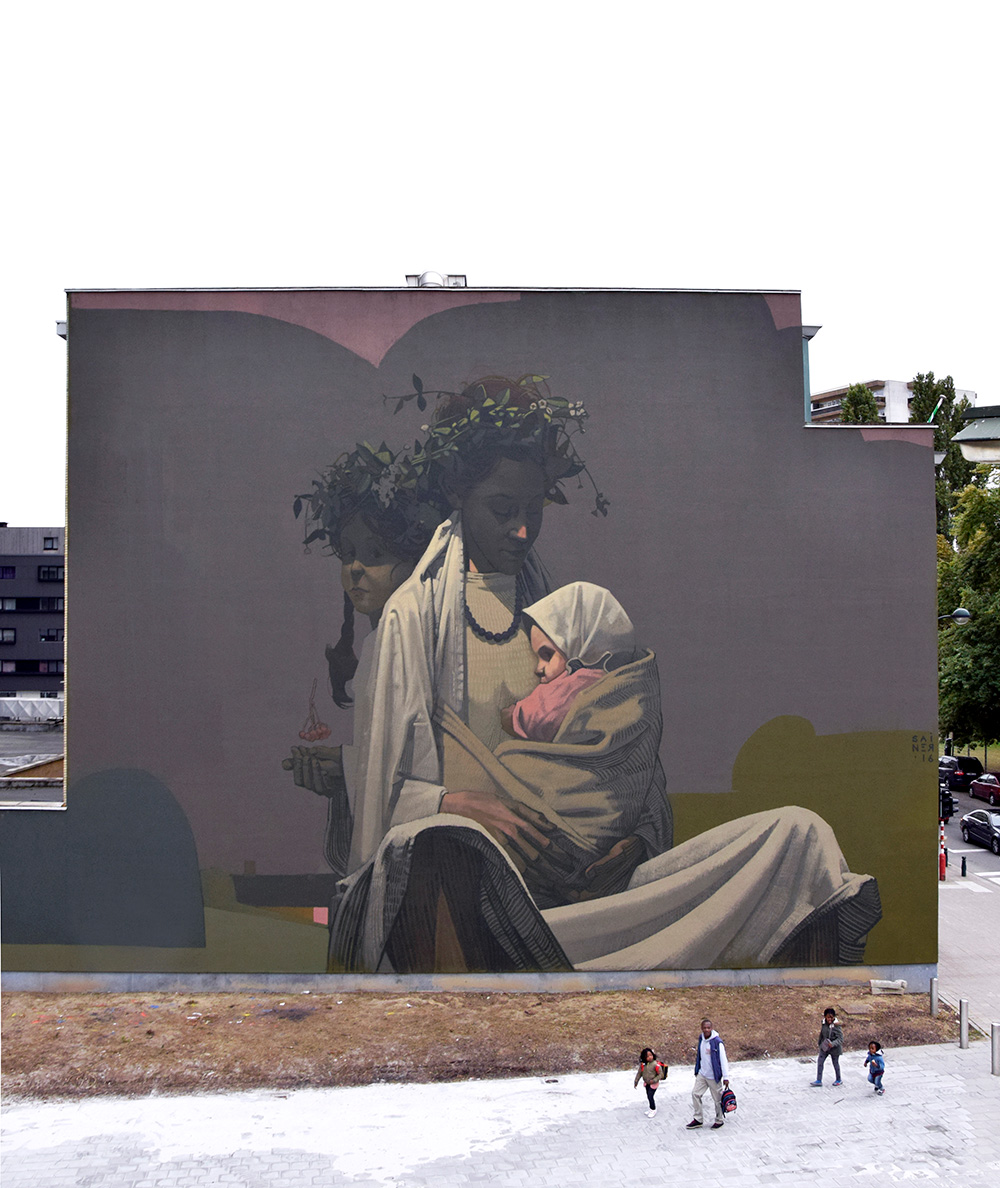
What is the situation with you and Bezt at the moment?
This year we are doing solo shows, separately, and each one is totally focused on that. The situation is cool—we are still really good friends, we're in touch regularly, we just travel less together. It's also because each of us has his own life and we are not living in the same city anymore. But when we do see each other, it seems that nothing changed: same stupid jokes and same way of thinking about situations. It all happened naturally. There was no fight or anything. If there is a chance to manage traveling together, we are doing it, and if not, we are doing solo walls. When we were studying together, we spent 3 to 4 years seeing each other 24/7 at school, graffiti jams, painting murals, etc. Now we just prefer to do fewer murals and focus more on the studio time. So, that’s the situation. We prefer to keep it natural, rather than trying to work together all the time just because we are known as Etam.
Do you have any major artistic influences?
I follow a lot of people doing contemporary urban or street art, but mostly I'm enjoying classic painters, both Polish and international ones. I discovered so many new great artists on Instagram, sometimes it feels like I'm spending too much time there. It motivates me to see all the great works that other people are doing. Also, music is a big influence for me.
You come from a musical family, right?
Yeah, my father is a musician, as well as my grandfather, and back when I was only listening to hip hop, he was always trying to convince me to listen to jazz. But I just didn't understand it then. Now I'm really into jazz, and I think painting is so related to composing music.
Are there any other places where you find inspiration?
Movies or books. It's really random. Like last year, I went to the Polish mountains for two weeks, just visiting places and painting landscapes. I haven't done such a thing in a long time, just being in nature, watching it change with light and everything, I found it very inspiring.
That influence is quite noticeable in your new paintings.
Yeah, I figured that, from landscape, I can really easily transition to abstraction and forget about details and the representational aspect of it. My idea during that trip was finding out how to use only a couple of colors to express the atmosphere of a place. I used to paint such motifs with lots of details. This time I just took my sketchbook, and with the pages being really small, I just couldn't do all the details. Eventually, I really got into capturing the atmosphere with way less work and a more minimalist approach.
What's with all the sports figures, the baseball players and such?
Well, I love sports, and after painting the first sports-themed piece, the golfer mural in Gdynia, I realized that the elements are perfect. The movement of the body, the clothes and little details like the hat, stick and ball. It's a perfect combination of elements for the kind of composition I like. That is why I started exploring baseball players in my sketchbook.
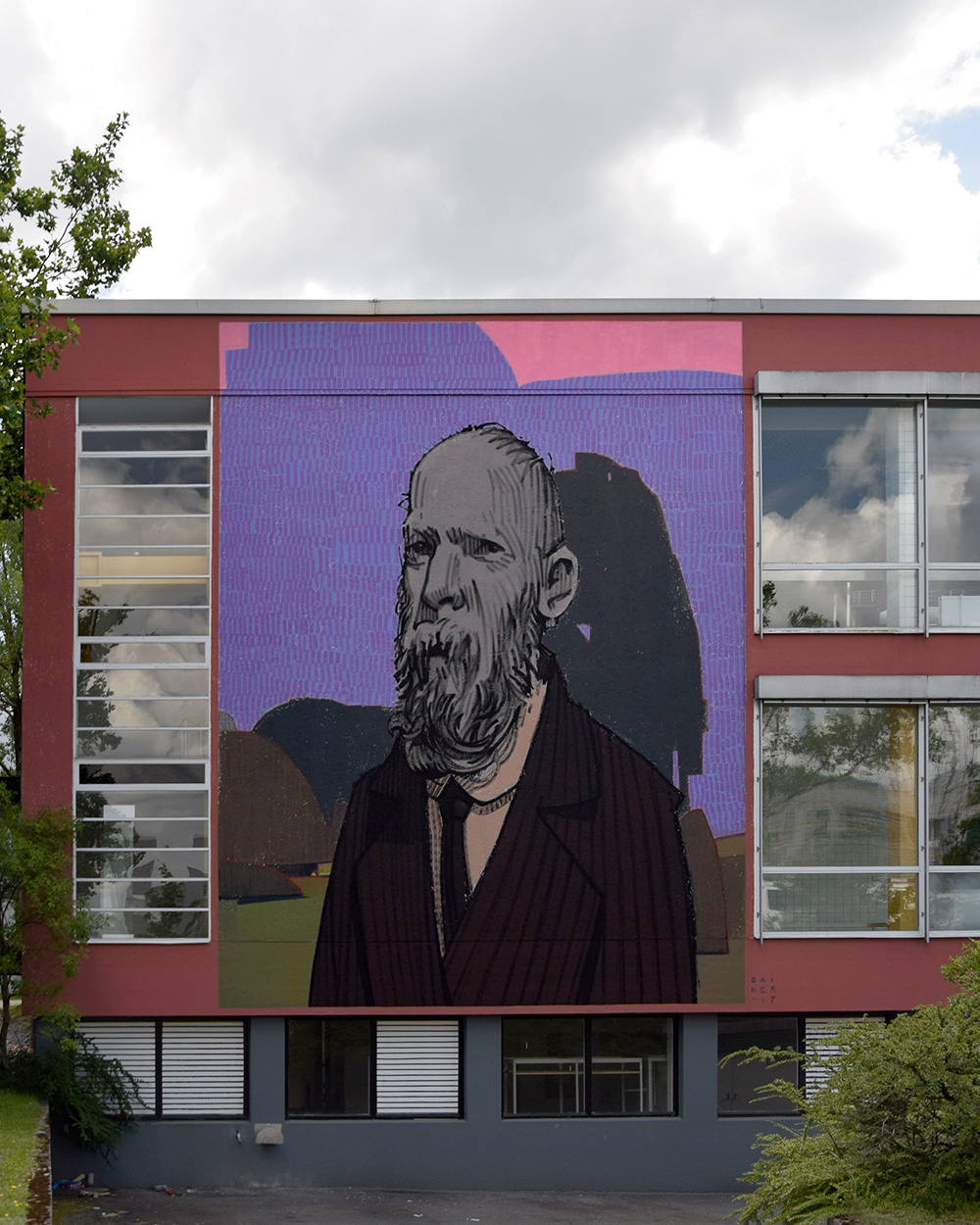
You were telling me a while ago that your murals don't really have a story or meaning behind them. Is that still the case?
Some of them have some basic story behind it, but mostly I'm focused on the abstract composition of the elements. The first thing I'm planning is the composition and the colors, and from there I add elements, characters and such. At the beginning, we were trying to have a story for every mural, but then I realized that symbols can be read totally different in different places. Also, there are so many little details and ways of reading an image, that if I tell the story, I might destroy the ways to enjoy the work. So, for me, it's more about the composition. If I wanted to tell a story maybe I'd just write a book.
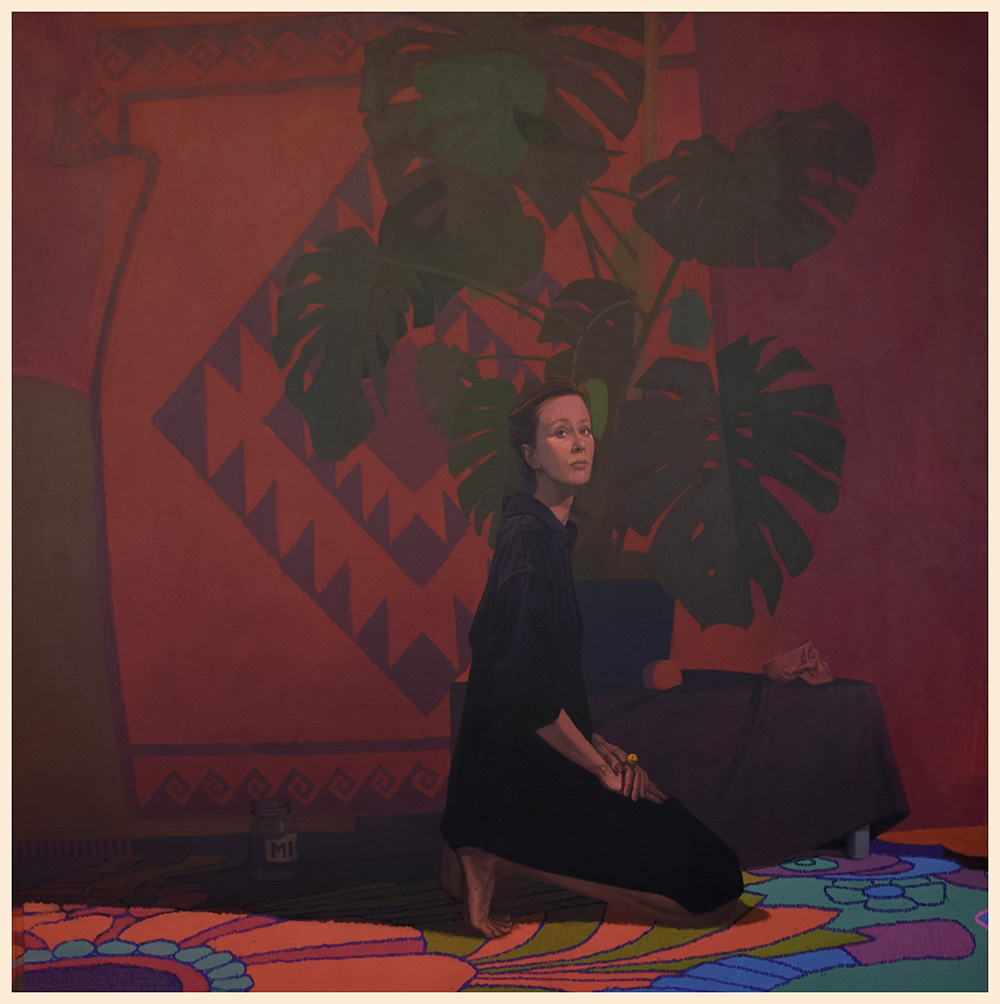
Since we're talking about this—what is your opinion on the current street art scene?
Sometimes I have a feeling it's too much. There is no quality control. A couple of years ago, people were saying, "It would be great if the whole city is painted." Now that this is happening, it's just too much. Social media changed it as well. You don’t need a gallery or agents to promote your work because you can do it by yourself. The sad part is that sometimes the quality level of art doesn’t follow the amount of self-promotion. This happened with music, cinematography, everything, not just street art. “Street art “ these days seems to be like a hashtag to get attention.
And I don't even like to call it "street art" because, for me, that was small interventions, stencils and stickers years back. I think muralism is much better word. In a way, it's great, because it enables people like myself to do what we do, meet each other, travel. Personally, I'm focused on my own work and I prefer to see myself as a painter and muralist. I love painting murals and I wouldn't consider stopping because of too many things going on.
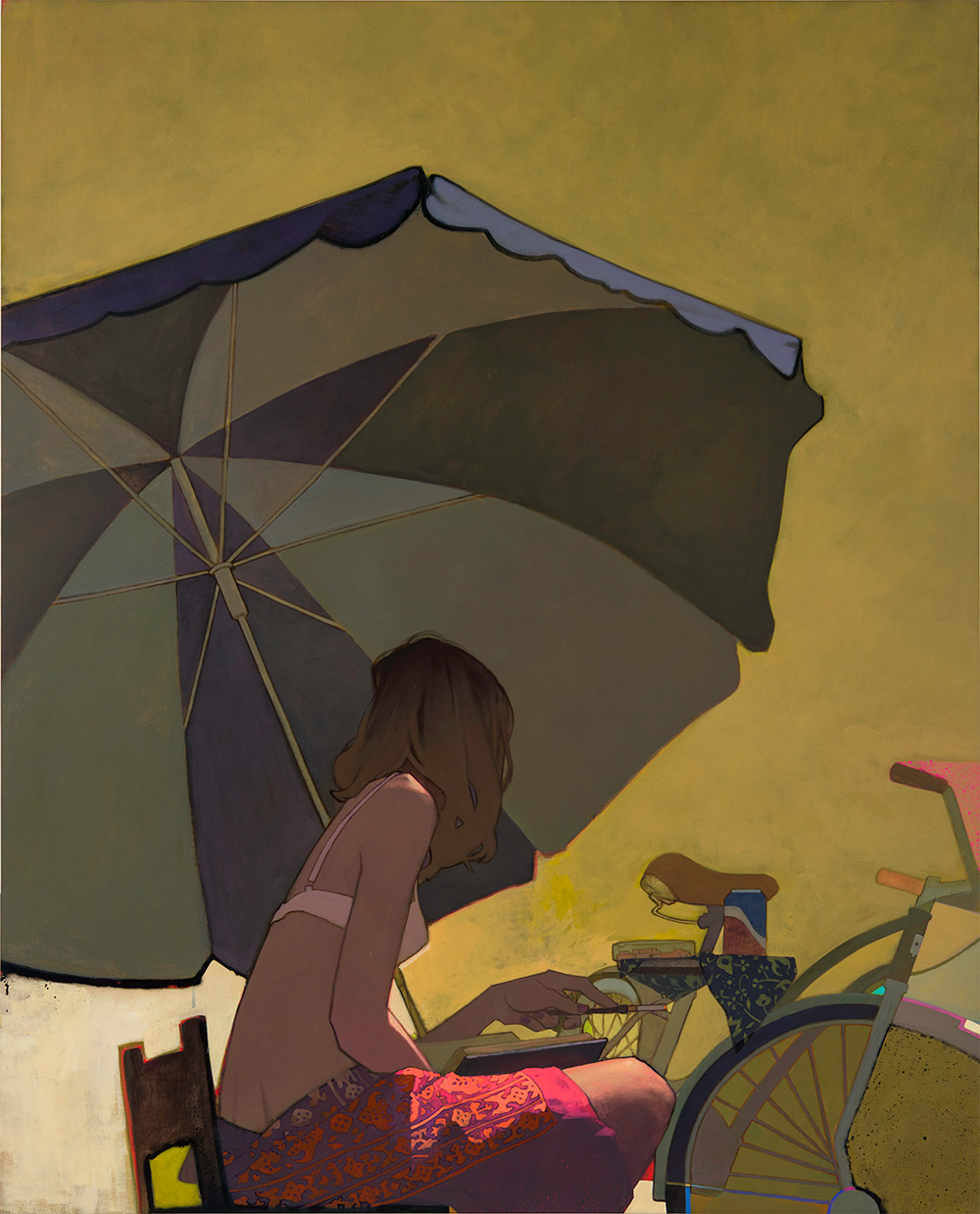
What are you working on these days?
I'm preparing a solo show at Galerie Openspace in Paris, opening in December. Since the gallery has four different rooms, I wanted to show different type of works in each. Some of them are similar to stuff I’ve worked on in the past, but also new elements, which I'm exploring in the landscape-based paintings. I'm really into those lately, as well as geometric compositions as the base of the work. There is a visible transition in the work between the first and last room of the gallery, from the classic works over more mixed-style pieces, all the way to abstraction.
The title is The Chaotic Harmony, which, in my opinion, basically describes everything around us. Chaos cannot exists without harmony. These are totally opposite ideas, but at the same time, describe each other. I prefer to see my works as abstract compositions, relationships between forms and colors, which is why the stories and meanings of situations in my paintings are unclear or sometimes irrelevant. The process of painting is really chaotic and sometimes an unexpected move, color or decision could bring new solutions for the image. Like I said, when I start to paint the canvas or the wall, I just have a basic sketch of the idea. The only limit is the shape of canvas, and the most interesting part is a searching of harmony between the shapes and colors. It seems to me that the further the final result is from the first idea, leading towards harmony on the canvas, the more we start to appreciate the process of creating.
Sainer’s new solo show, The Chaotic Harmony, will open in Paris at Openspace from December 2, 2017–January 20, 2018.

